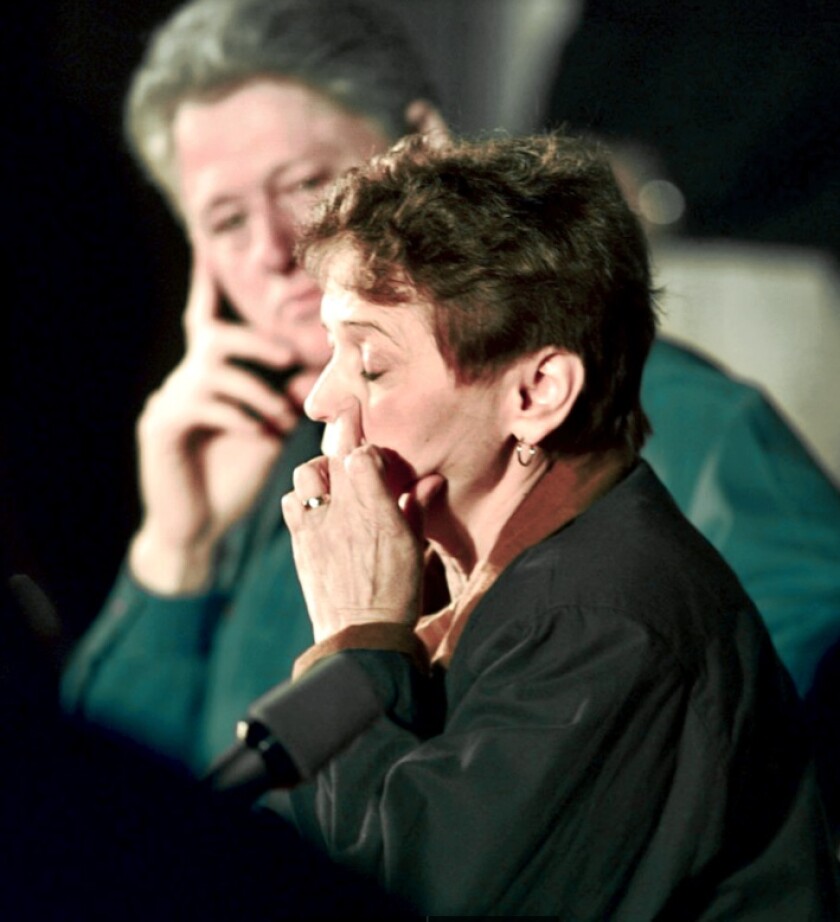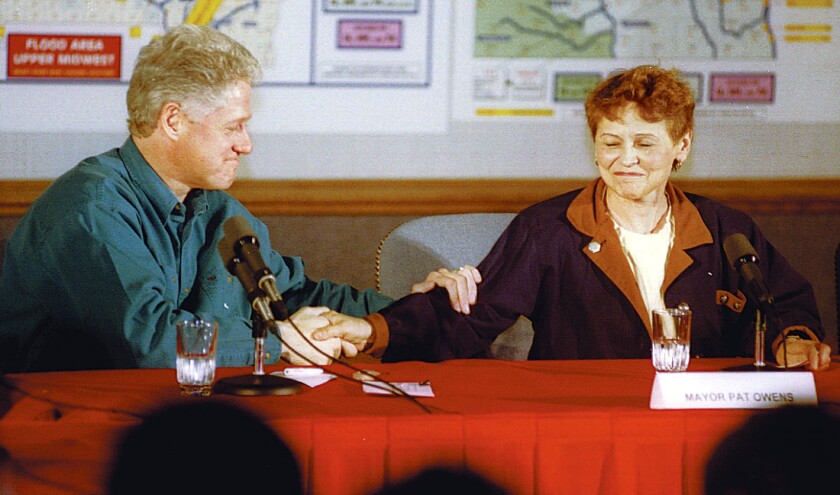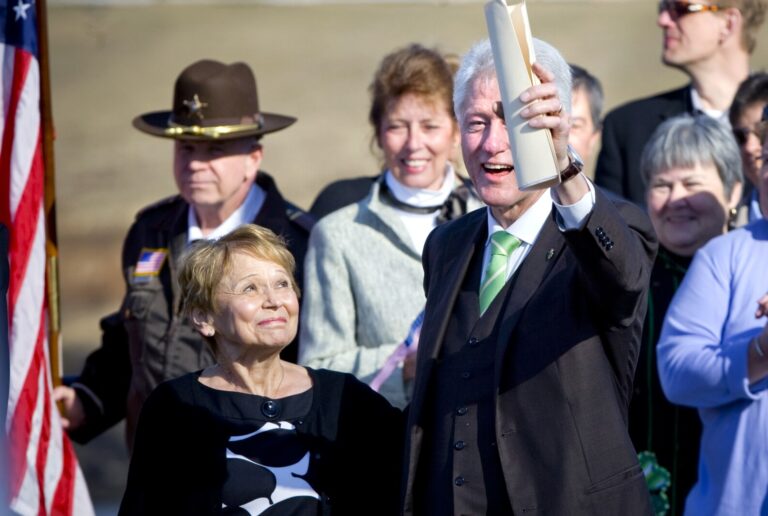GRAND FORKS – Former Grand Forks Mayor Patricia “Pat” Owens, who led the region through the devastating 1997 floods, has died.
Her daughter, Robin Owens Fuller, announced the news in an email to media on Tuesday afternoon.
“Pat passed away today of natural causes at age 83,” Fuller said.
Jackie Lorenz/Grand Forks Herald
Owens is known for leading Grand Forks through some of its greatest crises as mayor, when the Red River rose above sandbag levees and a city accustomed to flooding suffered nothing like the devastation of 1997. Parts of downtown caught fire as much of the city succumbed to the rising waters.
Images of the flood and fire were broadcast nationwide, and Owens was a major part of the coverage, recalled Keith Rand, now executive director of the Grand Forks Area Economic Development Corporation but then a Grand Forks city development employee.
Rand said it was a “really tough image” that was presented to the public and that “she really represented the community well.” Her ability to connect with key decision makers at the national level, including then-President Bill Clinton, helped direct resources to the city, he said.
“I remember her as a great ambassador for Grand Forks during a very difficult time,” Rand said. “She had great relationships with our congressional delegation and state leaders, and was referred to as ‘America’s Mayor’ at one point while we were going through this horrific event.”
In 2017, the Herald published a retrospective to mark the 20th anniversary of the flood, in which she described the difficult decisions she faced.
“I always remember our attorney, Howard Swanson, and city engineer Ken Bain, looking at me sitting there and saying, ‘Pat, we have to decide whether or not to evacuate the city,'” Owens recalled in a 2017 interview with the Herald.
Her response was, “Oh well.”

Photo: John Stennes/Grand Forks Herald
“I was tired and my mind was racing,” Owens said. “I thought, ‘If I make the decision to evacuate and there’s no flooding, I’ll be impeached.’ But I knew we had to save lives at all costs, so I signed the paperwork to begin the evacuation of the city.
“That was one of the best things I ever did, because then everything started to fall into place.”
Amid the disaster, a friendship developed between him and Clinton, a relationship The Herald recalled in 2012.
Owens recalled that during a speech at Grand Forks Air Force Base, which was then serving as a camp for people displaced by the flooding, Clinton promised to help the city rebuild — a promise that the Herald reported in 2012 as Clinton kept through federal funding for Community Development Block Grants, disaster recovery assistance and flood protection projects.
“He basically looked at the crowd and at me and said, ‘I’m with you guys until the end,’ and he kept that promise,” Owens told the Herald at the time.
And Clinton kept her door open to local officials at the White House after the visit, she said.
“I saw him pretty much every time I went to Washington,” Owens said.
Clinton returned to Grand Forks a few years after the flood to speak at a ceremony for the flood memorial near Solie Bridge, which records high water levels over the years, including a record 54 feet in 1997.
Owens was also in attendance and took to the stage with Clinton.
Owens led the city’s response to the floods and its subsequent recovery during one tumultuous and sometimes controversial term as mayor, losing a three-way race to local doctor Michael Brown in 2000, who himself served as mayor until 2020 when he was replaced by current Mayor Brandon Bochenski.
While Bochenski has never met Owens in person, she has been in contact with him via email and said she has been following the city’s development from afar and wishes him the best.
“I thought it was great that she took the time to reach out to me and wish me well,” Bochenski said. “She didn’t have to do that.”
He too noted her status as “America’s Mayor” during the floods, praising her for “rescuing our community from what was clearly the worst flooding in at least recent history.”
He said he felt she was “very much loved by the staff.”
Rand recalled that Owens served as mayor’s aide for many years before becoming mayor. After his term as mayor ended, Owens moved to Florida.
Owens’ name is inscribed on a pedestrian bridge over the Red River that connects Grand Forks to East Grand Forks near the Lincoln Park Golf Course, and a nearby sign reads, “In recognition of her extraordinary service as mayor of Grand Forks during and after the 1997 flood.”
When asked what image comes to mind when he thinks back on Owens’ time as mayor, Rand said it was of someone who demonstrated leadership on the brink of a historic local crisis.
“My image of former Mayor Pat Owens is that even though she was personally troubled by what the community was going through, she represented the community in that moment, advocated for us and ultimately put the city on the path to recovery,” he said.


Eric Hilden



